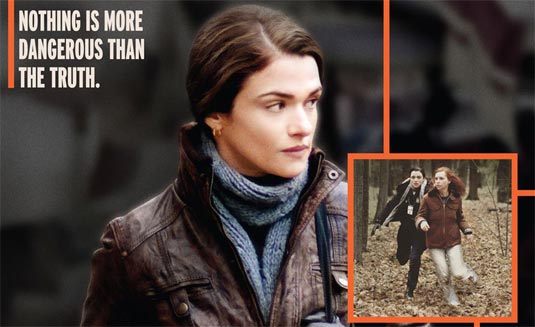Watching John Madden’s “The Debt” reminded me just how deceiving movie trailers can be. The theatrical trailer for the movie made it look like a run of the mill spy thriller and combined with a very hokey voice over narration, setting up the premise, it was enough to turn me off.
As for the actual movie itself? On one hand it’s much better then the trailer makes it out to be. Madden’s directing is sleek and the story stays on track, not sagging in any places. It also yields some good performances and certain parts of it are very intriguing.
With that said, the script by Mathew Vaughn and Jane Goldman, is very uneven. It tries to balance two interconnected storylines, one taking place in 1997 and the other in 1966, resulting in rushed plot lines and underutilized characters.
The film begins promisingly in 1997. A former Mossad special agent Rachael Singer (Helen Mirren) is at a party for a new book, written by her daughter Sarah (Romi Aboulafia, the woman in the trailer doing the narration) about her and two other agent’s dangerous mission in 1966 to capture a sadistic Nazi war criminal Vogel (a wonderfully evil and chilling Jesper Christiansen) and ultimately killing him. But she isn’t happy.
Next, the film goes to 1966 Berlin, where young Singer (Jessica Chasten) and her two other comrades, Stephan (Marton Csokes) and David (Sam Worthington) have to live together to capture Vogel and bring him back to Israel to pay for his crimes.
This part of the film is the weakest. Granted, the three young actors do the best they can (Chasten and Csokes especially). But the problem is that this is the stuff they gave away in the trailer and at the book party. We know what’s going to happen, therefore there’s not much suspense. Scenes where Rachael has to face Vogel to confirm his identity aren’t as tense as they should be.
Also there’s connection missing between the three characters, which I suppose is intentional considering they’re spies but the three spend so much time together that you’d think there would be some eventually. Granted a romance does ensue between Rachael and Stephan but they don’t have any chemistry.
Now, if you can get past this lengthy flashback, a fairly clever twist reveals that things didn’t go exactly according to plan for the agents and for twenty years they’ve had to live a lie. As an old woman Rachael, along with older Stephan (Tom Wilkinson) have to make things right. The “debt” aspect of the movie comes into play and proves to be the far more interesting portion since you don’t know what direction it’s headed in.
And it’s no surprise that the agents are more interesting when they’re older. Wilkinson and Mirren are as radiant as always but the real show stealer is Ciaran Hinds as old David. After seeing Worthington deliver yet another bland performance it was a relief to see Hinds put so much life and emotion into the character, considering David is the one that is most effected by the lie and hates Vogel the most.
If only there was more of him because sadly, all three of the veteran actors are underused, (especially Hinds) and because the movie spends so much time on the flash back the rest of the movie ends up being rushed. In fact the ending is especially hurried and underwhelming. It would have been better if the mission were shown in smaller vignettes, instead of one big flashback. It might have added a little more mystery to story and given the better actors more screen time.
So, if “The Debt” teaches us anything, it’s that movies can be better than their trailers. Though, considering the movies flaws, that isn’t saying much.



